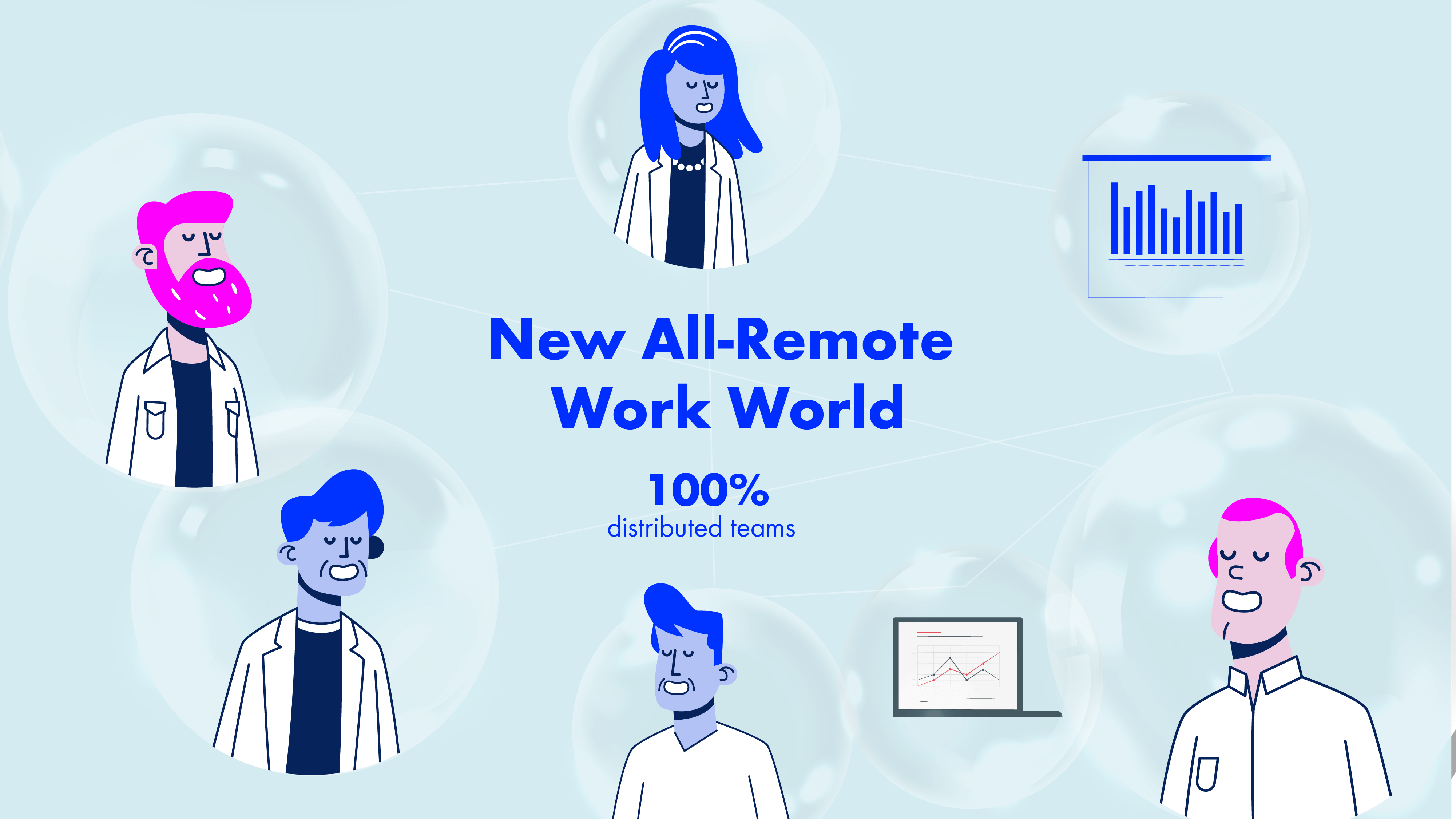
Most people knew that remote work would become our new reality one day. But nobody knew that day was going to come in February 2020. Just like that, agile software development teams were forced to become distributed while they shelter at home.
Here at Gigster, we’ve already scouted that territory for you. We’ve had five years’ of experience helping over 500 companies use the power of distributed teams to deliver thousands of innovative software applications.
Along the way, we’ve learned some lessons that might help you see the upsides of remote work, and avoid some of the things that won’t end well.
Here are the important ones.
Don’t Be Half Remote. Go All In
Build 100 percent distributed teams, not 60 or even 90 percent remote. Every role on your team should be location-agnostic, starting with the product manager and project manager. It’s not a good idea to be partly distributed, since in-person team members have conversations that leave out the remote workers.
That hurts both communication and morale. Of course, for the near term, that’s not a choice; it’s mandatory. Later, when things return to normal; you can use hybrid teams of in-house and remote. But in every case, the key is to have well-designed on-boarding and effective team collaboration tools.
Use the Best Collaboration Tools and Practices
Besides Gigster Innovation Management, we typically use Slack for messaging, Jira for task tracking, and Github for code management. Also, distributed teams need to adopt agile processes and cloud-first delivery practices.
And don’t reinvent the wheel with every new project; standardized on-boarding processes, tools integration, and process automation are critical elements of success for virtual teams.
Never Stop Measuring.
It’s especially important to monitor remote talent. You have to rate skills and rank talent – both for in-house employees and freelancers. You can’t look over their shoulder and see what they’re doing minute to minute, but you can calibrate how they’re performing from sprint to sprint.
It’s just as important to know how much availability remote workers have. Are they fully loaded, or do they have free time for additional tasks? Without the right tools, it’s hard to track the individual productivity and effectiveness of your remote workers.
As managers, you need a way to continuously measure each worker’s value – both their technical ability and their collaborative skills. The Karma scores that Gigster provides for rating and ranking each team member do just that. In fact, these scores make it possible to identify the top 20% of contractors you want to keep or hire.
De-risk
The saying “out of sight, out of mind” illustrates the difficulty of managing risk for distributed teams. Being under the same roof is a traditional way to mitigate risk, but we’ve learned there’s a better way: peer review by independent experts who are not part of the team, so they look at the work with fresh eyes and no home team biases. And the best reviews don’t happen once or twice; they are consistent, real-time risk audits at many milestones. We’ve seen this approach reduce risk by 75%.
Our large talent network helps us find the most appropriate peer reviewers, since we can use experts from one team to review the work from another, and vice versa.
Employ Elastic Staffing.
Most projects overstaffed from Day One, and then reallocate tasks on the fly. That approach definitely doesn’t work with remote teams. To be sure they have the talent they need through the life of the project, leaders of on-premise teams tend to staff projects on a full-time basis. But distributed teams can benefit from elastic staffing, where individual workers are used only for the phases of the project where they are needed.
Elastic staffing can increase overall productivity by up to 50%. It can also improve employee morale, by giving them more diverse work experiences and engaging them in meaningful work, instead of sitting idle and bored.
Final Thought
Don’t let the change overwhelm you.
If you were about to start a new initiative, and were blindsided by the current crisis, don’t hit the pause button. In our experience, we’ve seen that it’s possible to stand up a fully functioning remote team in just a few weeks, if you have a well-structured training and onboarding process.
The tips above are what we’ve learned so far. Gigster and our clients have embraced the remote work model for years, so we’ve seen it work well countless times. We’re fortunate to be ahead of the curve. But we’ll all be learning new techniques over the next several weeks and months. As we do, we promise to share evolving best practices. Be well, and stay tuned.
